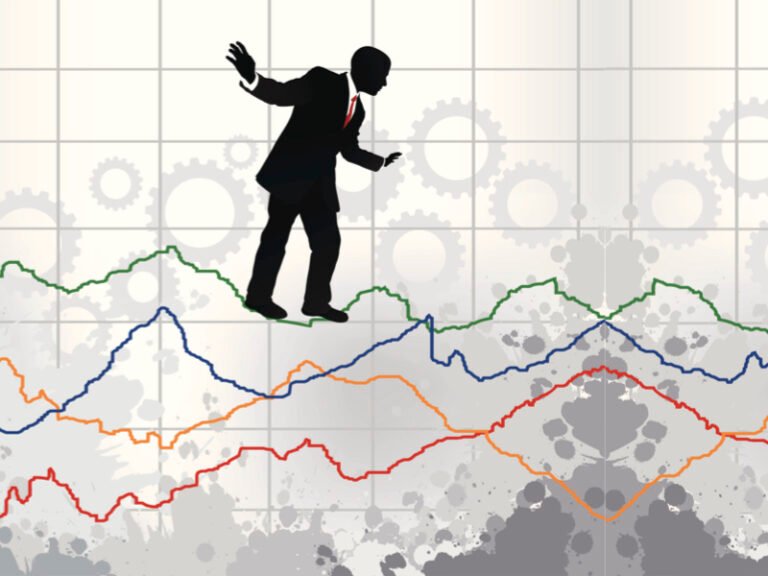On several key risk measures, low-vol ETFs have delivered, according to data compiled by Fundata Canada Inc.
“True to their objectives, the standard-deviation numbers are much lower,” said Brian Bridger, senior vice-president, analytics and data, with Toronto-based Fundata.
Another widely used metric to assess the effectiveness of low-vol strategies is the extent to which they participate, or “capture” returns in both up and down markets. “Low down-capture numbers show that these funds do a good job of limiting their losses when markets are down,” said Bridger. “But the low up-capture numbers illustrate how much they underperform in rising markets.”
Bridger compared the average returns of low-vol ETFs versus the averages in the Canadian, U.S., global, international and emerging markets categories.
The results, over the one-, three-, five- and 10-year periods ended Sept. 30 demonstrate how reduced volatility will often mean reduced returns. “Almost across the board, the low-vol ETFs have underperformed in their respective categories, on average, over the short and long term,” Bridger said.
Some of the greatest performance disparities can be observed in the recently booming U.S. stock market. In the three years ended Sept. 30, according to Fundata, the category average was 20.4%, versus only 12.2% for the average low-vol ETF.
Low-vol applications
Low-vol strategies have various applications. They can be a core holding in an equity category for a risk-averse investor. They can also be held in combination with a broad-market index ETF or an actively managed one, Desbiens said. “But also more and more over the years, low-vol ETFs have been used as a tactical trading vehicle, in periods of greater market uncertainty.”
Amid this year’s elevated uncertainty, investors continue to seek stabilizers within their balanced portfolios, said Hail Yang, director of the Canadian iShares business with the ETFs market-share leader BlackRock Canada.
“Minimum volatility ETFs can help reduce overall risk without abandoning equity exposure,” Yang said. “And as some traditional diversifiers such as long-term bonds have in recent years become less reliable in this role, minimum volatility strategies may have an important role to play in portfolio construction.”
Low-vol strategies can have a positive impact on investor behaviour, reducing the tendency to bail out at market lows.
“Their effectiveness really comes down to how much protection they offer,” said Maddy Griffith, a director and institutional portfolio manager with CI Global Asset Management. “When you lose less, you bounce back faster and that smoother ride can make it a lot easier for investors to stay invested.”
Though the various low-vol or min-vol ETFs have similar goals, their methodologies vary widely. This will affect how different their holdings will be from broad-market index ETFs, and how differently they may perform, especially over shorter periods.
Beta, a measure of a stock’s volatility in relation to the rest of the stock market, is the key stock-selection metric for BMO’s low-vol suite. The flagship is the 14-year-old BMO Low Volatility Canadian Equity ETF, the oldest low-vol ETF in Canada, and at $5.3 billion, also the largest.
Unusually for a low-vol strategy, the Canadian ETF has outperformed its benchmark over the long term. As of Sept. 30, it returned an annualized 12.6% since inception in October 2011, versus 9.9% for the S&P/TSX Composite Index. Since inception, the ETF has captured 79% of upside returns with an impressive downside-capture ratio of only 32%.
Exposure to any one security in the BMO ETFs is capped at 10%, and there are also sector limits. The maximum is 35% per sector in Canada, and 25% in the U.S., international and emerging-market ETFs.
Despite these constraints, the sector exposure of the BMO ETFs tends to be radically different from their market benchmarks.
BMO Low Volatility US Equity ETF, for example, recently held about 10% in technology stocks, drastically lower than the 42.6% weighting in the S&P 500 index. And the ETF’s highest sector weighting was 20.2% in utilities, versus only 2.4% for the broad market.
The iShares MSCI Min Vol ETFs, in selecting lower-risk stocks, consider the correlations between stocks, while also imposing sector and country constraints. In seeking to deliver market-like exposure with less risk, said Yang, the selection process avoids any large concentration in “safe haven” sectors.
The iShares strategies have a history of providing smaller down-capture ratios and lower maximum drawdowns than broad market benchmarks. They have also succeeded in mitigating the impact of sharp short-term downturns.
Yang cited as an example April 3 of this year, when North American markets plunged in reaction to tariff announcements. On that day, the S&P 500 lost 6.6% in Canadian-dollar terms while the iShares MSCI Min Vol USA Index ETF was also down, but only by 3%.
Meanwhile, the S&P/TSX Capped Composite Index fell 3.8%, while iShares MSCI Min Vol Canada Index ETF lost only 1.6%.
Another variation on the theme of lower-risk equity investing is the “minimum downside volatility” strategy employed by CI in the global and U.S. equity categories. It focuses only on minimizing losses.
“In practice, the model ignores “good” volatility and concentrates on companies that have historically held up better in downturns without giving up too much upside,” said Griffith. “The result is a smoother experience with better downside protection.”
Launched in January 2023, the CI ETFs lack the long-term track record of their older competitors, including BMO, iShares and Invesco Canada. (Entrants with less than 10 years of history also include ETFs in the Brompton, CIBC, Fidelity, Franklin, Mackenzie, Manulife, TD and Vanguard families.)
Instead, Griffith points to the history of the ETFs’ underlying indices, including the Solactive US Minimum Downside Volatility Index.
Since 2006, that index has captured roughly 70% of the market’s upside but only 54% of its downside, she said. “This approach lines up with real investor behaviour. Most people are far more sensitive to losses than to gains of the same size.”

